Papers by Wolfgang Strauss
New Media Arts—The Thinking Space for Digitality
Intelligent systems reference library, Dec 31, 2022
Informatik Spektrum, 2008
In diesem Artikel beschreiben wir die Entwicklung von Interaktivität in der
Medienkunst, die ein... more In diesem Artikel beschreiben wir die Entwicklung von Interaktivität in der
Medienkunst, die einhergeht mit der Entwicklung von
Vernetzungsstrukturen und der Herausbildung disziplinübergreifender
Arbeitsweisen. Vorwiegend am Beispiel unserer eigenen Arbeiten der vergangenen 20 Jahre zeichnen wir die Entwicklung interaktiver Kunst
von einer neuartigen ästhetischen Erfahrung über eine verstärkte
Raumorientierung bis hin zum kulturellen Wissens- und Gedächt-
nisspeicher nach.

3rd Summit on New Media Art Archiving. Proceedings ISEA Symbiosis Artists & Archives, 2023
Most digital archives still provide access through phonebook-like lists. But the digital archive ... more Most digital archives still provide access through phonebook-like lists. But the digital archive is a living (data) culture. An artificial intelligence chatbot predicts that the digital archives of the future will improve the user experience. More than 20 years ago, however, the authors developed the media art archive platform netzspannung.org (1998-2010) with Knowledge Discovery tools such as the Semantic Map, Media Flow or Matrix, which enable an interactive and performative engagement with the archive. This approach allows visitors to become active participants and cocreators of the archive's content rather than passive viewers. It is not primarily about finding familiar information, but about searching and browsing in unfamiliar contexts. The goal is to create a participatory experience that encourages visitors to become data performers in a walk-through thinking space and to acquire new knowledge without handing over their own thinking to the automated machine.
Audio, data performer, interactive, interface, knowledge discov- ery, living data, mapping, participatory experience, performa- tive, semantic, serendipity, thinking space, visual, walk- through.

Present Continuous Past(s): Media Art, Strategies of Presentation, Mediation, and Dissemination. Eds. Ursula Frohne, Mona Schieren, Jean-Francois Guiton. Springer Wien, New York., 2005
The Internet platform “netzspannung.org” is a comprehensive archive of the current discourse on t... more The Internet platform “netzspannung.org” is a comprehensive archive of the current discourse on the theory of media, of artistic work and new strategies for communicating digital culture. Unlike other online platforms established in Germany in recent years, such as “Medien Kunst Netz” or “Datenbank der virtuellen Kunst”, which, using varying approaches, offer a historical perspective on media art, netzspannung.org addresses current trends in digital art and culture. One fundamental characteristic of the platform is its interdisciplinary take on media art, media design, media theory and information technology and the way it communicates this information in the form of online teaching and learning modules.
The Art and Science of Interface and Interaction Design, 2008
This article describes the evolution of interactivity in the media arts ranging from immersive vi... more This article describes the evolution of interactivity in the media arts ranging from immersive virtual reality to intuitive interfaces for real-time installations, to online archives and tools for knowledge discovery finally unfolding in networked environments for public space. This development is exemplified by the authors' own works and compared with selected media art works in the field.

Creating Digitally - Shifting Boundaries: Arts and Technologies-Contemporary Applications and Concepts, 2023
With their works, the authors describe their approach to the digital and their artistic thinking ... more With their works, the authors describe their approach to the digital and their artistic thinking as a mixture of analog and digital. They show how media art shapes digitality and illustrate strategies of interactivity with and without the use of artificial intelligence. Their groundbreaking works (Peter Weibel, 2012) each reveal new aspects of the digital. Since the late 1980s they have been realizing these works as artist-scientists in research institutions, where they created their own structures. They co-founded ART + COM in Berlin and headed art and technology departments in major German research institutions such as the GMD Institute for Media Communication and the Fraunhofer Institute for Artificial Intelligence. The motif of the Denkraum [thinking space] - a space filled with data - runs like a thread through all projects. How can one encourage one’s own thinking and feeling despite all-encompassing automation? Based on an understanding of cultural hacking as a form of participation, the concept of the thinking space is presented as a counter- aesthetic to an inhuman digitality.

Virtualities and Realities, Eds. Rasa Smite, Raitis Smits. RIXC Center for New Media Culture Riga , 2019
This research was supported in part by the research programme of the Senate of West-Berlin and De... more This research was supported in part by the research programme of the Senate of West-Berlin and Deutsche Telecom/Bercom at Art + Com, Berlin. The MARS Media Arts & Research Studies Department at the Fraunhofer Institute for Media Communication was financed in part by the eRENA 1997-2000 Electronic arenas for culture, performance, arts and entertainment project within the EU FP4 funded ESPRIT i3 long-term research. The Communication of Arts and Technology project (CAT) was funded by the German Ministry for Research and Education and the eCulture Factory project by EU-EFRE and the City of Bremen. Today the authors can be found in their Berlin studio and are represented online on eCulture Factory and their personel website among others: www.youtube.com/user/eCultureFactory, fleischmann-strauss.de.
Mensch und Computer 2006: Mensch und Computer im StrukturWandel. München, De Gruyter Oldenbourg., 2006
Der Beitrag stellt ein gestengesteuertes Interface zur Exploration multimedialer Datenbestände, n... more Der Beitrag stellt ein gestengesteuertes Interface zur Exploration multimedialer Datenbestände, nämlich der Projekte des ‚digital sparks' Wettbewerbes vor. Funktionalität und Gestaltung der so genannten "Matrix Lupe" (GUI), einem Browser zur Vergrößerung und Hervorhebung einzelner Bilder einer Bildmatrix und die berührungslose "PointScreen"-Technologie (HCI) werden in ihrem Einsatz als Rauminstallation ‚digital sparks Matrix' detailliert beschrieben. Die Installation wurde im Mai 2006 im Rahmen der Ausstellung Kunst Computer Werke im Zentrum für Kunst-und Medientechnologie (ZKM) Karlsruhe erstmals ausgestellt.
Proceedings of the 18th ACM international conference on Multimedia, 2010
The central theme of interactive media art installation Liquid Views is the well in which Narciss... more The central theme of interactive media art installation Liquid Views is the well in which Narcissus discovers his reflection. The work from 1992-93 was first exhibited at Siggraph 1993 in Simon Penny's Machine Culture show. It was exhibited in over 50 cities with different cultural background worldwide. Nearly 20 years later the work is on exhibition again to study the changed conditions of human media communication.

Aesthetic Computing Paul Fishwick (ed.) Cambridge: MIT Press, 2006, 2006
In this article we aim to place our culturally and aesthetically motivated research and developme... more In this article we aim to place our culturally and aesthetically motivated research and development of new interfaces and interactive systems within the context of aesthetic computing, a concept put forward by Paul Fishwick. As media artists and researchers at the Fraunhofer Institute for Media Communication (IMK), we investigate the influence of digital transformations through computers and networks on society. In doing so, we make use of public space onsite and on the Internet as a field for experimentally testing and evaluating new forms of communication. Our interest is in creating new accesses to space and the public with a view to enabling expanded horizons of perception and experience. Our objective is to build up exemplary action spaces that can be physically experienced so as to visibly point up the effect of the technologies on the informed body. In this way the concept of visualisation familiar to computer science is put into a sensory and cognitive context, for, after all, an important role of media art is to show how we understand what we see and perceive.

Deliverable 1 . 1 VRML based extended galleries-reconsidering the concept of a multi user environment
This paper presents our work and research findings on developing the concept of extended gallerie... more This paper presents our work and research findings on developing the concept of extended galleries. It describes further development of the original "Home of the Brain" VR installation developed in 1992 as a metaphor for virtual space as a public forum. An artistic concept of a multiuser space is introduced, focusing on the notion of virtual space as a stage setting and on behaviours and interactions of people in an extended gallery space. The notion of user representation is replaced by the notion of user enactment and avatar is treated as an extended body of communication. Several artistic interaction scenarios are presented accompanied by an instinctive and invisible interface environment. A VRML based extended gallery demonstrator, "Murmuring Fields", is presented as an mixed-reality shared environment installation for several users and as a decentralised network architecture supporting large number of users across Internet. The work has strong links to eRENA...
eRENA-D6-1-Navigation-Devices, 1998
Task 6.1 is concerned with developing new interfaces and new metaphors for more physical interact... more Task 6.1 is concerned with developing new interfaces and new metaphors for more physical interaction with virtual environments, involving the entire body and its physical properties. The deliverable is divided into three parts: • " A Characterization of Input Devices used in Interactive Installations " develops a taxonomy of how input devices and space have been used in interactive installations. • " Navigation for the Senses " describes several devices for whole-body interaction developed or under development at GMD. • " Some Elementary Gestural Techniques for Real-Time Interaction in Artistic Performances " describes gesture-based interfaces for multimedia performances. Part I Survey of input and tracking devices used in artist's interactive installations at the ZKM
Electronic Arenas for Culture, Performance, Art and Entertainment
Im Projekt eRENA (electronic Arenas for Culture, Performance, Art and Entertainment) wurde das Po... more Im Projekt eRENA (electronic Arenas for Culture, Performance, Art and Entertainment) wurde das Potential digitaler Technologien für raumbezogene künstlerische Produktionen in den Bereichen VR, Mixed Reality und Multi-User-Environments erforscht. Im Rahmen des Projekts ...

Disappearing Architecture. Eds. Georg Flachbarth, Peter Weibel. Birkhäuser, 2005
“The traditional concept of space is a concept based on perspective. It was developed half a mill... more “The traditional concept of space is a concept based on perspective. It was developed half a millennium ago and perceived space from a fixed and absolute viewpoint as being an endless, homogeneous and three-dimensional expansion. The decisive novelty brought about by cubism was the displacement of this absolute perspective by a relative one. Artists experience the space’s unreal comprehensiveness as its essential element ... and that one has to move through space to be able to really experience it as being three-dimensional”.
Today, the world of information understands the human being at the centre of a wirelessly linked world, which comprises all networks. We study different concepts of integrating digital processes into the space of everyday life. Instead of ignoring the physical space, like in tradi- tional Virtual Reality (VR) approaches, we create inter- faces and processes, which link human perception to the computer’s programme and the real/virtual Mixed Reality space. In our focus is the human being with his/her sen- sual, cognitive and culturally coded experiences in order to create contact between
people via perceptive, performative and mobile interfaces.
Proceedings Third International Conference on Virtual Reality and Its Application in Industry; 2002, Hangzhou, China , Apr 4, 2003
In this paper we present our effort towards the goal of perceptual user interface for major inter... more In this paper we present our effort towards the goal of perceptual user interface for major interaction tasks, such as navigation/travel, selection/picking and personal data access, for virtual shopping. A set of 3-D navigation devices, vision-based pointing and personal access system are mainly discussed. The motivation and design principles behind these interfaces are also described. A prototype integration solution, which bring these devices together in virtual shopping environment, is given. These interfaces and interaction devices have been implemented and tested for evaluation.
E-Education Applications: Human Factors and Innovative Approaches. Ghaoui, Claude (Ed.):Hershey: Idea Group Publishing,, 2004
This paper will illustrate the requirements on electronic and digital media concepts in the conte... more This paper will illustrate the requirements on electronic and digital media concepts in the context of e-learning, using the very latest developments and experience in this sector as examples. In the broadest sense, the aim is to visualise information and create networked ‘knowledge spaces’ which are accessible to users as new forms of teaching and learning through play. Experimental methods, tools and interfaces that support communication between the digital and physical spaces and investigate new forms of knowledge finding are being developed and tested.
GMD Report 82, 1999
Imagine a person navigating on the trackball of a mouse - it would need full body control. In thi... more Imagine a person navigating on the trackball of a mouse - it would need full body control. In this article we describe the Virtual Balance, an input device for a responsive virtual environment. This device is driven by weight shift on a small platform and does neither require special training nor wearing uncomfortable equipment. The Virtual Balance aims at intuitive navigation through complex 3D space. It can be used to skate or fly like on a magic carpet through a virtual world. With shifts of body posture the navigator controls speed and direction of his/her movement in the model world, which is calculated from the changing pressure on three weight cells under the platform. Different fields of application are presented, showing scenarios already realized as well as a variety of possibilities for future use.
"Personal and Ubiquitous Computing". Proceedings of the 1st International Conference on Appliance Design 2003. Springer London., 2003
The Information Jukebox is a digital enquiry kiosk aimed at browsing media files. It combines a n... more The Information Jukebox is a digital enquiry kiosk aimed at browsing media files. It combines a novel gesture-based and hands-free interface with an expressive graphical user interface and an attractive physical design. The system was developed within the context of a media arts exhibition and thus had to meet both functional and semiotic requirements. Unlike comparable systems it offers a complete and playful solution for browsing media.
In this paper we describe briefly intuitive physical interface called “Virtual Balance”, present ... more In this paper we describe briefly intuitive physical interface called “Virtual Balance”, present recent modifications and give the most impressive example of its use for navigation in and exploration of reconstructed models of ancient cities. One can imagine that example as a fly on a magic carpet in the ancient cities.
Responsive Workbench
Virtual Reality ’94, 1994


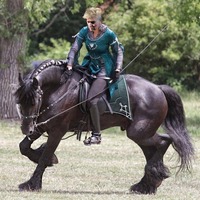
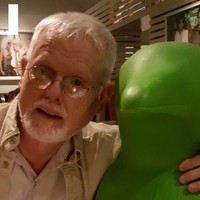


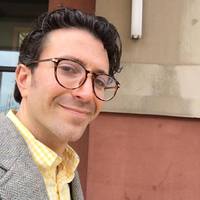
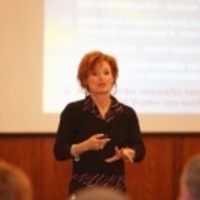
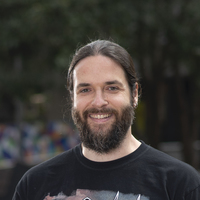
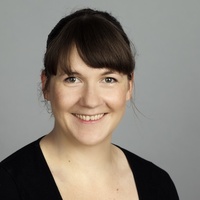

Uploads
Papers by Wolfgang Strauss
Medienkunst, die einhergeht mit der Entwicklung von
Vernetzungsstrukturen und der Herausbildung disziplinübergreifender
Arbeitsweisen. Vorwiegend am Beispiel unserer eigenen Arbeiten der vergangenen 20 Jahre zeichnen wir die Entwicklung interaktiver Kunst
von einer neuartigen ästhetischen Erfahrung über eine verstärkte
Raumorientierung bis hin zum kulturellen Wissens- und Gedächt-
nisspeicher nach.
Audio, data performer, interactive, interface, knowledge discov- ery, living data, mapping, participatory experience, performa- tive, semantic, serendipity, thinking space, visual, walk- through.
Today, the world of information understands the human being at the centre of a wirelessly linked world, which comprises all networks. We study different concepts of integrating digital processes into the space of everyday life. Instead of ignoring the physical space, like in tradi- tional Virtual Reality (VR) approaches, we create inter- faces and processes, which link human perception to the computer’s programme and the real/virtual Mixed Reality space. In our focus is the human being with his/her sen- sual, cognitive and culturally coded experiences in order to create contact between
people via perceptive, performative and mobile interfaces.
Medienkunst, die einhergeht mit der Entwicklung von
Vernetzungsstrukturen und der Herausbildung disziplinübergreifender
Arbeitsweisen. Vorwiegend am Beispiel unserer eigenen Arbeiten der vergangenen 20 Jahre zeichnen wir die Entwicklung interaktiver Kunst
von einer neuartigen ästhetischen Erfahrung über eine verstärkte
Raumorientierung bis hin zum kulturellen Wissens- und Gedächt-
nisspeicher nach.
Audio, data performer, interactive, interface, knowledge discov- ery, living data, mapping, participatory experience, performa- tive, semantic, serendipity, thinking space, visual, walk- through.
Today, the world of information understands the human being at the centre of a wirelessly linked world, which comprises all networks. We study different concepts of integrating digital processes into the space of everyday life. Instead of ignoring the physical space, like in tradi- tional Virtual Reality (VR) approaches, we create inter- faces and processes, which link human perception to the computer’s programme and the real/virtual Mixed Reality space. In our focus is the human being with his/her sen- sual, cognitive and culturally coded experiences in order to create contact between
people via perceptive, performative and mobile interfaces.
Living in mixed realities
What does it mean to live, work and play in a world that is shaped and perceived by digital media, networks, and architectures of real and virtual space? How can the development of complex communication spaces, living environments, and economic models be designed as an interplay of technological, social, and artistic forces as Mixed Realities of Art, Science, and Technology?
The design of a mixed reality architecture that connects processes in virtual space with the social surroundings and everyday cultural practice poses challenges for technicians, scientists, and artists alike. Basic design elements are networked structures that enable new collaborative forms of work and knowledge discovery, people-oriented interaction and awareness, media rooms, room ware, and progressive interfaces.
cast01 scientists will present innovative technologies, tools, and research projects from the Information Society Technologies (IST) program of the European Commission. Artists show aesthetic concepts of digital culture and new interactive media formats.
Some of the topics that symbolize the influence of information technology on life and work patterns in a networked society are agents, avatars, semantic web, poetic interfaces. cast01 explores new ways in which the next generation of cultural techniques can be understood, researched, and supported by creative interdisciplinary strategies.
cast01 shows outstanding examples from research, technological development, and artistic production in the form of research work and artistic presentations as well as drafts and posters on ideas that are still being developed. More than 400 researchers, artists, theorists, practitioners, and entrepreneurs submitted interdisciplinary projects and critical concepts on mixed reality. The highlights of the conference are the launch of the Internet Media Lab “netzspannung.org” and the “digital sparks” initiative.
The proceedings of the conference "cast01 - living in mixed realities" (403 pages) appeared in print and online in the second issue of the netzspannung.org/journal
ISSN Number:
1617-6855, german /1618-1379, English (Print)
1617-6863, german / 1618-1387, English (Internet)
http://netzspannung.org/version1/cast01/index.html
http://netzspannung.org/version1/cast01/press/index.html
http://netzspannung.org/version1/extensions/cast01-proceedings/pdf/cast01_proceedings.pdf